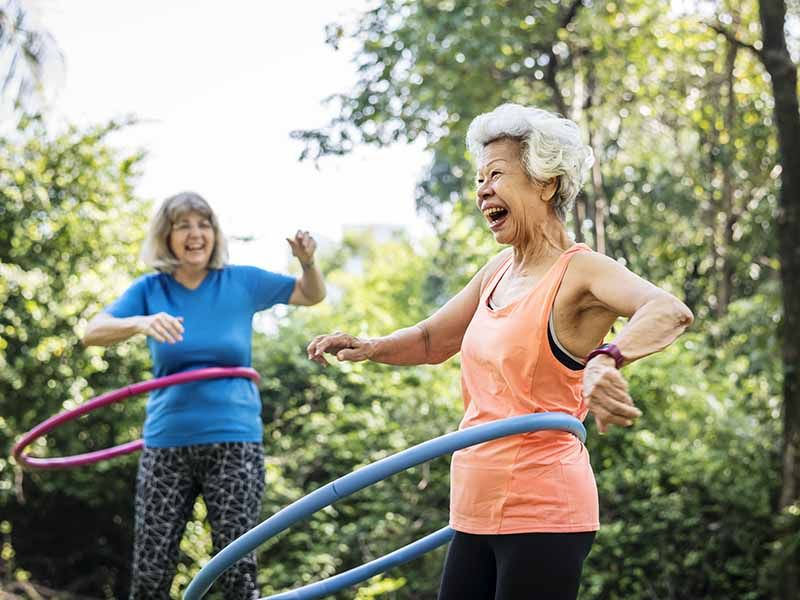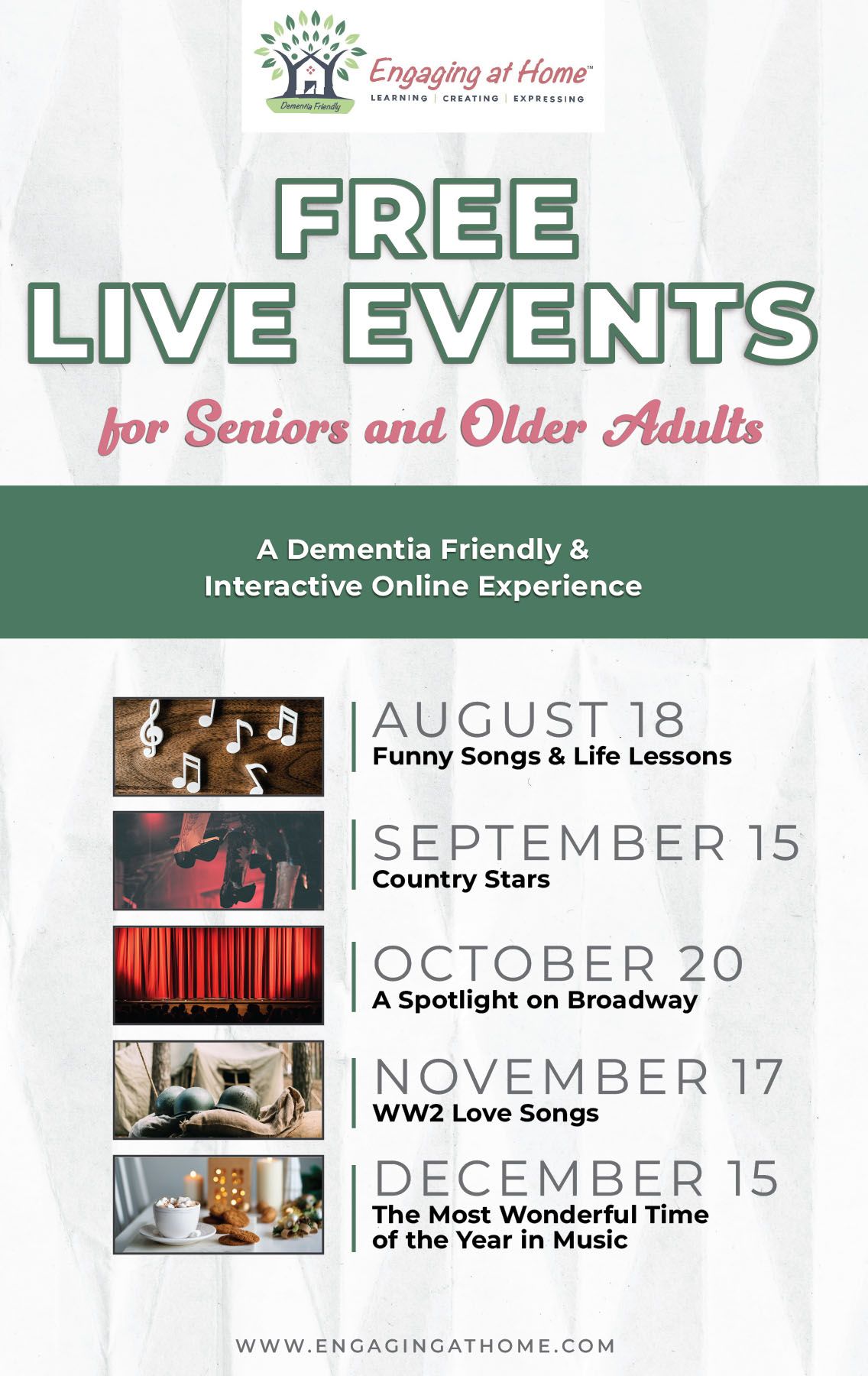Does this headline spark your curiosity? It sparked our curiosity because providing fitness and exercise resources and support for caregivers and their loved ones has always been challenging. Joe Holder, a Nike master trainer, coined the phrase "exercise snacking" as a way to get people moving in short bursts instead of 60 minutes of crushing it at the gym. People and organizations picked up the term, including The Blue Zones, one of our favorite topics. The concept seems especially appealing to persons affected by dementia and their caregivers. First, it's more fun to ask a person if they want "a snack, an exercise snack!" Second, for people who resist exercise, it is a way to get them moving (even for a short walk or a stretch in the kitchen), and holding soup cans as weights is new and novel!Caring for persons affected by
dementia, more often than not, leaves caregivers questioning their decisions. We
all make quick daily decisions that are intended to serve our loved ones in a
positive and encouraging way. We don’t always get the result that we are
looking for. The good news is that you are not alone. If we took a national
survey, we would most likely discover that most caregivers have the same
feelings.

The story of the Blue Zones is fascinating, and it's not surprising that "exercise snacks" would become part of their interesting and commonsense recommendations for living a healthier and longer life. The Blue Zones was founded by Dan Buettner, a National Geographic Fellow and New York Times bestselling author who discovered five places in the world, dubbed blue zones, where people live the longest and are healthiest. Adults of all ages and stages in life enjoy learning about the Blue Zones. It's a 21st Century concept that is solid in principle and also healthy and intriguing.
What is exercise snacking? It's a concept that fits well with The Blue Zones' theme of "moving naturally." According to Polar.com, "while the name conjures up munching on your favorite corn chips," it means short bursts of exercise throughout the day. As with all exercise programs, each "snack" needs to be tailored to the individual participant- always consider safety first and always have water available.
Experts recommend doing each exercise five-ten times, depending on the participant. Healthy Aging Physical Therapy provides examples of five different exercise snacks. Visit their site for more information. Of course, we anticipate that you and your loved one will create exercises that fit a participant's capability and personality. Let us know what works for you!
Along with the benefits of feeling better physically and mentally, exercise snacking has many other physical health benefits, including preventing other diseases such as heart disease and diabetes. Exercise can also help maintain balance, increase muscle, and reduce fall risks. This means we can be independent longer and feel better as we age. Exercise has also been proven to prevent bone loss, relieve pain and boost immunity.
That's not all; exercise also brings many mental health benefits: stress relief, increased happiness, increased life satisfaction, and increased sleep. Exercise also is proven to decrease symptoms of depression and anxiety and increase relaxation.
WOW! With all those amazing benefits, it's a no-brainer to start moving and get your heart going. Start small by having exercise snacks, going on short walks, dancing to your favorite music, and even participating in chair exercises on YouTube. Add exercise to your day and watch for the benefits.
What is exercise snacking? It's a concept that fits well with The Blue Zones' theme of "moving naturally." According to Polar.com, "while the name conjures up munching on your favorite corn chips," it means short bursts of exercise throughout the day. As with all exercise programs, each "snack" needs to be tailored to the individual participant- always consider safety first and always have water available.
Experts recommend doing each exercise five-ten times, depending on the participant. Healthy Aging Physical Therapy provides examples of five different exercise snacks. Visit their site for more information. Of course, we anticipate that you and your loved one will create exercises that fit a participant's capability and personality. Let us know what works for you!
Along with the benefits of feeling better physically and mentally, exercise snacking has many other physical health benefits, including preventing other diseases such as heart disease and diabetes. Exercise can also help maintain balance, increase muscle, and reduce fall risks. This means we can be independent longer and feel better as we age. Exercise has also been proven to prevent bone loss, relieve pain and boost immunity.
That's not all; exercise also brings many mental health benefits: stress relief, increased happiness, increased life satisfaction, and increased sleep. Exercise also is proven to decrease symptoms of depression and anxiety and increase relaxation.
WOW! With all those amazing benefits, it's a no-brainer to start moving and get your heart going. Start small by having exercise snacks, going on short walks, dancing to your favorite music, and even participating in chair exercises on YouTube. Add exercise to your day and watch for the benefits.



